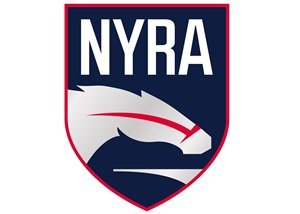NYRA Promotes Backstretch Housing as National Standard


As New York regulators move to add new government oversight of backstretch housing at three New York Racing Association racetracks, NYRA officials Dec. 11 promoted the corporation's housing improvement efforts as a nation-leading model.
NYRA officials did not directly comment on new backstretch housing rules given preliminary approval Dec. 10 by the state Gaming Commission. But NYRA did say it is already spending millions improving backstretch housing conditions.
"NYRA's ongoing backstretch improvement plan is the most ambitious and aggressive of any racing organization in the country,'' NYRA spokesman Patrick McKenna said in an email response Tuesday seeking comment on the Gaming Commission's actions on Monday.
The state agency took a first step Monday on a plan to add backstretch housing at NYRA's three tracks to a specific set of regulatory oversight rules. Eventually, the rule will expand to other tracks in the state, which have a fraction of the backstretch beds compared with NYRA.
With little commentary, the board of the regulatory agency gave preliminary approval to a rule that officials say will treat racetrack backstretch housing similar to existing requirements for migrant workers' housing at farms. Final action is not expected until sometime in 2019, during which time the agency will take public comments on the ideas.
The proposed rule calls for a set number of inspections of backstretch housing conditions by state or local agencies, and sets minimum standards for size, building materials, air and water temperatures as well as an array of other mandates such as pest management practices. The agency says 90% of the state's 5,512 backstretch housing beds are at NYRA tracks.
NYRA said it will have spent $23 million on backstretch housing between 2013 and the end of this year, including for both new construction and renovation of existing buildings.
"This level of commitment has resulted in the construction of new residential buildings at Belmont Park, the first of which was opened in 2016 and marked the first new residential construction at NYRA in many decades. The second new residence was opened just a few weeks ago and its completion builds on the progress made since 2013. By the end of 2019, all 71 existing residential buildings at Belmont will have been renovated and upgraded,'' McKenna said.
The NYRA spokesman added that 36 Oklahoma Track residences at Saratoga Race Course have been renovated and work will move on in 2019 to backstretch housing at Saratoga's main track. It also renovated three residences at Aqueduct Racetrack in 2016. When the current construction program is complete by the end of next year, McKenna said NYRA will have renovated or built 110 residential buildings at the tracks.
In other Gaming Commission actions, the board voted to delay—out of what its chairman said was deference to an absent board member—a vote to finalize rules setting minimum penalty levels for equine drug violations.
The board also gave preliminary approval to a new rule expanding use of helmets and safety vests by racetrack workers. That plan will now go through a public comment period.
Final approval was also given to a measure easing certain restrictions on claiming races. The previous rule required that the minimum price for a horse entered in a claiming race be at least 50 percent of the value of the race's purses. Now, a track can seek state approval to change those minimum terms if it can show it has in place certain "enhanced" horse safety measures.
